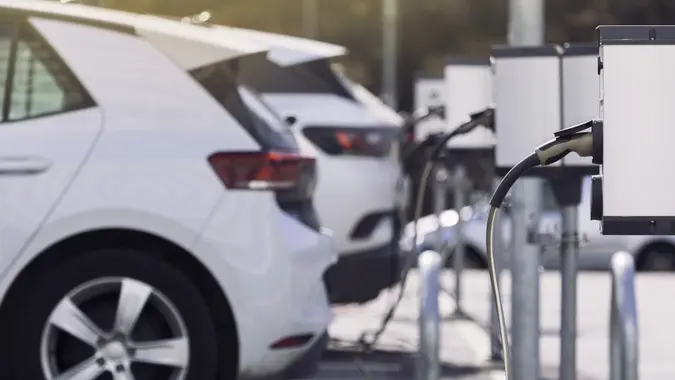Most Americans Blame AI for Higher Utility Bills, but Is It Really at Fault?

Commitment to Our Readers
GOBankingRates' editorial team is committed to bringing you unbiased reviews and information. We use data-driven methodologies to evaluate financial products and services - our reviews and ratings are not influenced by advertisers. You can read more about our editorial guidelines and our products and services review methodology.

20 Years
Helping You Live Richer

Reviewed
by Experts

Trusted by
Millions of Readers
Seven in 10 Americans say their electricity bills have gone up in the past year — and many are pointing the finger at artificial intelligence (AI). A new survey from Arbor found that 61% of respondents believe AI is already having a significant impact on their energy costs, and over two-thirds are worried about its future effect.
But is AI really the reason your utility bill keeps climbing? One expert says it’s not the only factor — but it’s quickly becoming one of the biggest.
AI’s Role in Rising Power Costs
Artificial intelligence isn’t the only driver of rising power costs, but it’s become the biggest new source of strain on the power grid.
“Massive AI data centers are essentially ‘factories of intelligence’ that convert electricity directly into computation,” said Owen Quinlan, head of data at Arbor. “The U.S. is now seeing the fastest demand growth since World War II, largely fueled by this infrastructure boom.”
When demand spikes that quickly, utility companies have to buy extra power at premium prices or build new capacity to keep the grid stable.
“Those costs don’t stay with tech companies — they flow downstream to households through higher rates and reliability charges,” Quinlan said.
In some markets, capacity prices have risen elevenfold in just two years, and analysts estimate roughly two-thirds of that is due to data center growth, Quinlan said.
“The result is what we call the ‘AI power tax’ — families paying an extra $10 to $20 per month even if their own usage hasn’t changed,” he said.
In addition to AI use, utility bills are being driven up by our power grid mix, aging infrastructure and more.
“But AI is accelerating a long-standing pricing problem,” Quinlan said. “One where regular consumers are footing the bill for industrial-scale energy use they can’t see or control.”
How To Keep Electricity Bills Low as AI Creates More Demand for Power
“The best defense right now isn’t unplugging more devices — it’s getting smarter about the rate you pay,” Quinlan said.
Here’s what he recommends to lower your utility bills:
- Compare your electricity supply rate regularly. “In deregulated states, utilities automatically move you to a default rate when your contract expires, and that rate is often among the highest. Tools like Arbor track real-time market data to find lower-cost fixed-rate plans, often saving households hundreds per year.”
- Lock in a fixed rate before volatility spikes. “As AI and data center demand drive wholesale price swings, fixed-rate plans give you cost certainty, even when markets surge.”
- Avoid “teaser” supplier offers. “If a plan looks too good to be true, it usually is. Short-term promos often flip to higher rates after three months.”
- Check for waste, but focus on impact. “Weatherproofing, LED lighting and smart thermostats still make a dent, but your biggest savings come from paying the right rate, not using less power.”
Overall, Quinlan believes that it’s the system, not individual habits, that are the problem.
“Our system is broken,” he said. “Until it’s modernized to better distribute renewable energy, the smartest move is to act like a Fortune 500 company would — use the data, know your market and optimize your energy buying.”
More From GOBankingRates
 Written by
Written by  Edited by
Edited by 

























